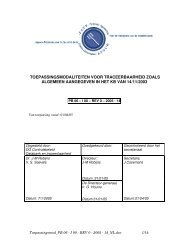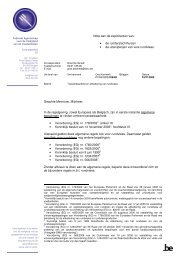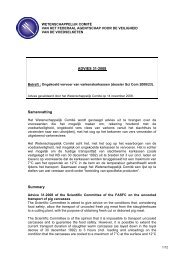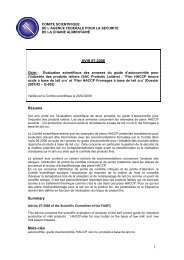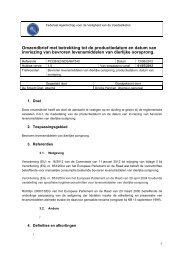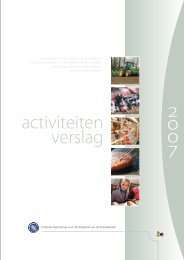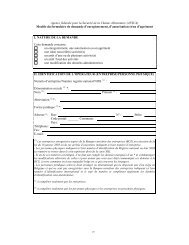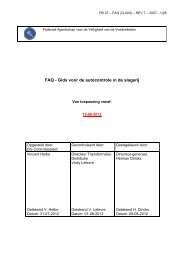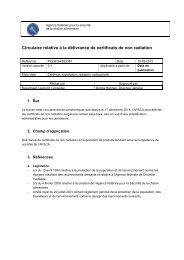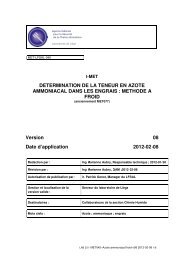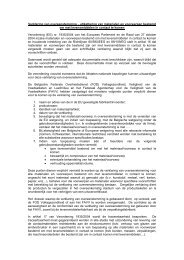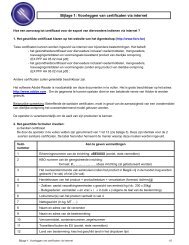Document - FAVV
Document - FAVV
Document - FAVV
- No tags were found...
You also want an ePaper? Increase the reach of your titles
YUMPU automatically turns print PDFs into web optimized ePapers that Google loves.
Evaluation of immunoassay kits for determination of ochratoxin A in cereals4.1.4.1.2 Data handling and statistical analysesThe concentration of OTA in the internal standard included in the kit is calculated by linear regression of the arearesponse versus concentration of the OTA standard. A t-test will be used to determine whether the concentration ofthe standards deviates significantly from those of the certified reference standard.4.1.4.2 Work package II: Cross reactivity4.1.4.2.1 Cross reactivity in solvent4.1.4.2.1.1 Study designThe stock solutions of OTA, OTB, OTα, Citrinin, Zearalenone and AFLA B1, Coumarin, 4-HydroxyCoumarin andL-phenylalanine were diluted using the appropriate extraction solvent of the kit to obtain a calibration curve. Thiscalibration curve has an equal number of points with comparable concentration as the calibrants for the kit. Theassay procedure as described by the manufacturer was further followed.Concentrations on the abscissa are given in ng/g concentration of OTA in the cereal, not the concentration in thesolvent. This makes a comparison between different kits more easy as they do not always use the same standardconcentration.4.1.4.2.1.2 Data handling and statistical analyses4.1.4.2.1.2.1 Elisa kitsDose-response curves were constructed by plotting the theoretical concentration against the relative absorbance(B/Bo). From this calibration curve the concentration at which 50% extinction occurs is calculated. In a typical logversus logit curve of an ELISA kit this corresponds to the intercept. The relative cross-reactivity in % can becalculated as follows:Equation 8 CR = C50%[OTA] / C50%[COMPONENT] * 100With:C50% [OTA]: concentration of OTA required for a 50% signal reduction of the zero standardC50%[COMPONENT]: concentration of specified component required for a 50% signal reduction of the zero standard4.1.4.2.1.2.2 LFDAs the LFD reader of Charm generates directly readings in concentration (ng/g), a different approach was used.Calibration curves were constructed, the cross-reactivity was calculated by comparing the slopes.Equation 9 CR = Slope[COMPONENT] / Slope [OTA] * 1004.1.4.2.2 Cross reactivity in matrix4.1.4.2.2.1 Study designFor the components that generated a significant cross-reactivity (>15%) the exercise was repeated in matrix insteadof pure extraction solvent. 3 different matrices (wheat, winter barley and oats) blank (




